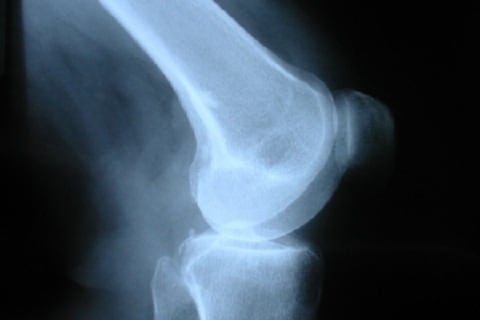“I wouldn’t say it’s an up and coming application,” said Adam Ismail, the executive director of the Global Organization for EPA and DHA Omega-3s (GOED).
“It has been an established market for some time. There was a burst of product development in the early 2000s, mostly using omega-3s in conjunction with glucosamine and chondroitin. Since then it has tapered off, largely because the science connecting omega-3s and osteoarthritis is still developing,” Ismail told NutraIngredients-USA.
A tale of two markets
Harry Rice, GOED’s VP of regulatory and scientific affairs, said omega-3 fatty acids have shown convincing benefits in the joint health area, but only one one side of the market.
“Joint health falls into two categories, osteoarthritis and rheumatoid arthritis. For rheumatoid arthritic conditions, the data for the efficacy of omega-3s is looking very promising for reducing inflammation and pain and reducing patients’ need for additional arthritis drugs,” he said.
Rheumatoid arthritis is an autoimmune condition, and omega-3s’ benefits in reducing inflammation seemed to be a promising mode of action. In osteoarthritis, though, inflammation for the most part arises from mechanical injury and insult, and while omega-3s showed early promise in the off Broadway world of in vitro and animal studies, the story petered out on the big human stage.

“The data for osteoarthritis, on the other hand, is just not good. It looked good in vitro and in animals. But in humans, it has just not panned out to date,” Rice said.
“It’s a little baffling. These studies were done in animal models that have shown good transfer into humans. I don’t know why it was different in humans. Perhaps it’s a matter of the right studies weren’t done,” he said.
Ismail said part of the issue, too, with omega 3s for joint health was the early products relied on other ingredients, like glucosamine and chondroitin, that couldn’t go in the same pill.
“They were marketing supplement packs and those type of things,” Ismail said. It’s an approach to supplementation that has pretty much fallen by the wayside, as other supplements crowd in, threatening pill fatigue for customers, and as more consumers take omega-3s for other indications or for general health. As for where omega-3s stand in the market for consumers seeking help with osteoarthritic joint pain, Ismail said the assessment is complicated by large number of products that may be making a variety of claims on the label, including a generic "supports healthy joints" claim.
New avenue of approach
What might be needed is a new avenue of approach, said Scott Minton, PhD, a science adviser for Nordic Naturals. Minton said the evolving understand of what is happening at the cellular level with omega-3s and in particular with cells in a compromised joint will drive new experimental models. For a long time the understanding of how omega-3s worked to quell inflammation was similar to looking at how water quenches flames without really understanding how water molecules actually interrupt combustion.
“An important thing to remember is that research often times follows physiological understanding. We are dealing with cells, the materials that cells in the joint produce, and what those cells produce when they are under duress.” Minton said.
“And we are looking at the materials that cells in other parts of the body produce that are part of that process. Omega-3 fatty acids are designed to be part of these cells,” Minton said.
Minton said a promising new area of research is to look at how omega-3s are actually employed during different cellular processes.
“These omega-3s are taken out of the cells and used to make signal molecules. The resolvins, for example, are a group of compounds that are made from DHA and these are popping up in a lot of research that shows they have a lot of different effects,” Minton said.
Hector Lopez, principal and co-founder of Supplement Safety Solutions and the Center for Applied Health Sciences said using these snippets of omega-3s to field new products is still a ways in the future, but is a promising area of research. One challenge that presents itself right away is the short half life of the so-called SPMs or specialized pro-resolving mediators, which might be dealt with by understanding better how these molecules are made and looking for ways to steer that process to make more of one or another to yield a desired result.
“SPMs function as ‘firefighters’ to not only douse the ‘fire of inflammation’ but also clear ‘flammable debris’ from areas of tissue disruption/injury, infection, metabolic dysfunction or other insult,” Lopez said.
“We are looking to harness the enormous potential of this relatively novel area in fatty acid nutritional biochemistry, by providing a nutritional "toolbox" that includes providing both substrate (long-chain omega-3 essential fatty acids) plus botanical extracts that may encourage more efficient metabolism to yield SPMs when and where the body may need them most,” he said.
Personalized nutrition promise
Minton said understanding those processes better, and in particular how they differ from person to person, could lead to a whole category of personalized omega 3 products to support healthy joints.
“I think we are close to a point where we can start to ask nutritionally the right questions of the body. What is the right level of proteins, the right level of fats and carbohydrates so we supply just the right thing that you need? Many people aren’t giving their bodies the right building blocks and that’s where everybody comes in just a little differently. A long distance running may or may not need more to support his joints than the guy who goes to the gym on the weekend to lift weights,” Minton said.
